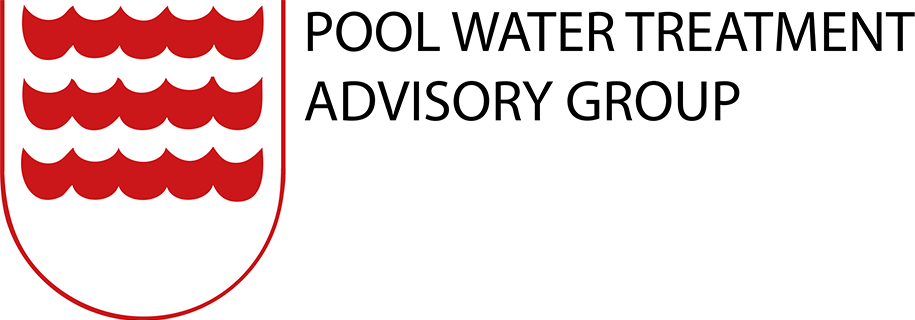PWTAG Technical notes are updates or new material for the standards and guidance given in the PWTAG book, Swimming Pool Water and the PWTAG Code of practice and should be read in association with these publications.
Superchlorination is not recommended as a routine or even occasional method of shock dosing to compensate for inadequacies in pool treatment. It is generally bad practice, and can generate unwelcome byproducts. But if something has gone wrong – poor results from microbiological testing perhaps, or a catastrophic breakdown in treatment – it may be necessary to superchlorinate.
It can also be a way to deal with contamination by diarrhoea, as some intestinal pathogens (eg Cryptosporidium) are resistant to normal levels of chlorine residual. In this case it may be needed where filtration is inadequate (high-rate for example, or regular coagulation not practised).
PWTAG Technical note on faecal contamination deals with this. Superchlorination can also deal with other organisms should the need arise.
Preparation
Two pool parameters are needed as a starting point:
- the capacity of the pool in litres. Note: 1m3 = 1,000 litres, 1 gallon = 4.54 litres
- the pool turnover period (the number of hours for a volume of water equivalent to the entire water volume of the pool to pass once through the water treatment plant).
The following chemicals and equipment will be required to undertake the procedure (which of course must include subsequent dechlorination):
- a suitable chlorine donor – sodium or calcium hypochlorite (not any cyanurate-based disinfectants as they are not effective enough)
- a dechlorinator – normally sodium thiosulphate pentahydrate
- a pool water test kit together with a dilution pot
- one or more clean 10-litre plastic buckets
- a cold water supply.
Operators must be confident that the pool plant (valves, seals etc) will withstand superchlorination.
Superchlorination procedure
- Close the pool to swimmers. If more than one pool uses the same filtration system, all pools will have to be closed to swimmers and superchlorinated. Do not allow anyone to enter the pool(s) until superchlorination and subsequent dechlorination is completed. Isolate automatic dosing controllers to avoid damage to the sensors.
- Raise the free chlorine concentration as required to deal with the problem, based on the listings shown below this list.
(CT values are sometimes quoted in this context: CT=concentration in mg/l x time in minutes). Multiply the concentration required by the pool volume in litres to give the total quantity of hypochlorite to be added. Example: a 25x13m pool might contain 487,000 litres of water (487m3); superchlorination to 20mg/l, to deal with possibly Cryptocontaminated diarrhoea, would take 0.156 x 487,000ml = 76 litres of sodium hypochlorite (seven or eight buckets). Note: 100m3 = 22,000 gallons. - Add the total amount of calcium hypochlorite/sodium hypochlorite to tap water in the bucket(s) until fully dissolved/mixed. Then spread evenly around the pool surrounds and mix well by agitation. Failure to dilute and spread evenly can result in the precipitation of hardness scale. Superchlorination will raise pH, so acid will be needed to reduce the pH value to 7.5 or less. In the case of contamination by diarrhoea ensure the water temperature is 25°C or higher.
- Ensure that the filtration system is operating while the water reaches and is maintained at the chlorine level required for superchlorination (see listings). With spas, all aerators, sprays etc should be operating throughout.
- Test the free chlorine concentration 15 minutes after the initial addition to ensure that the correct concentration has been achieved (see listings). This may necessitate dilution of the sample with chlorine-free water to give an accurate measurement.
- Leave for the desired contact time (see listings). Check every two hours to ensure the concentration is being maintained. If necessary re-dose to reinstate the required free chlorine residual, again checking pH.
- Backwash the filter thoroughly after the given contact time and top up pool to the required water level. Be sure the backwash effluent is discharged directly to waste (and not to a septic tank or water course). As usual, rinse the filter before resuming filtration.
Reasons for superchlorination
| Diarrhoea (possible contamination with Cryptosporidium) |
|---|
| Concentration required: 20mg/l Contact time: 13h Calcium hypochlorite required [1]: 0.033g/l Sodium hypochlorite required [2]: 0.156ml/l |
| Algal growth |
| Concentration required: 10mg/l Contact time: 24h Calcium hypochlorite required [1]: 0.00155g/l Sodium hypochlorite required [2]: 0.078ml/l |
| Legionella (spas) |
| Concentration required: 50mg/l Contact time: 16h Calcium hypochlorite required [1]: 0.0775g/l Sodium hypochlorite required [2]: 0.39ml/l |
| Raised coliforms, E coli |
| Concentration required: 5mg/l Contact time: 1h Calcium hypochlorite required [1]: 0.0077g/l Sodium hypochlorite required [2]: 0.039ml/l |
| Raised P aeruginosa |
| Concentration required: 5mg/l Contact time: 12h Calcium hypochlorite required [1]: 0.0077g/l Sodium hypochlorite required [2]: 0.039ml/l |
| Raised colony counts |
| Concentration required: 5mg/l Contact time: 1h Calcium hypochlorite required [1]: 0.0077g/l Sodium hypochlorite required [2]: 0.039ml/l |
[1] 65% available chlorine; [2] 14% available chlorine
Dechlorination
Dechlorination can be achieved by the addition of 5g sodium thiosulphate pentahydrate to remove 1mg/l free chlorine in every 1,000 litres pool volume. Always slightly under-dose to avoid excess chemical reserves.
When the free chlorine concentration has been reduced, and pH value adjusted, to their normal operating ranges, the pool may be re-opened for use.
- Subject: Superchlorination of swimming pool water
- Date: February 2014
- Download: Technical Note 23 PDF
